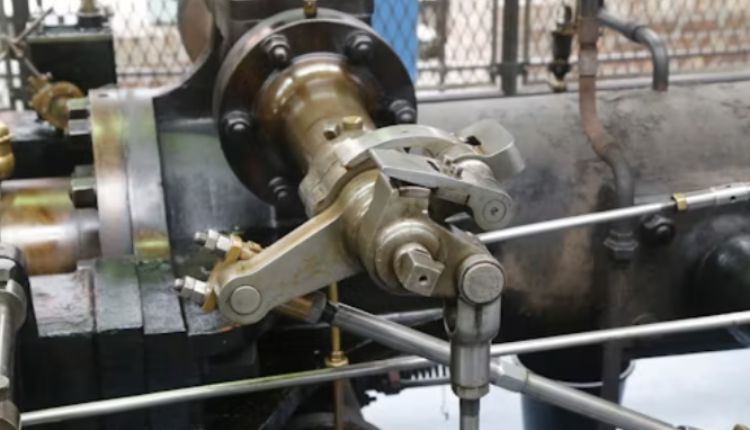With each passing day, industries are adopting newer, advanced forms of technology. The very core of these systems happens to be a component that is often neglected, but maintains pivotal value in process control, which is the automated ball valve. Historically, these valves were only suited for basic hydraulic systems, but now, they are being implemented in an abundance of advanced automated systems. This proves that almost all industries are finding unique ways to use automated ball valves, including those that are quite specialized and unorthodox.
This article discusses five surprising uses of automated ball valves that showcase their versatility and growing significance in contemporary industrial B2B systems.
Improving Precision in Beverage and Brewing Systems
Master brewers know the importance of precision and control during production. One of the industries that automated ball valves are used is beverage production, specifically breweries. These facilities need stringent hygiene requirements, automated balancing procedures, and precise timing, all of which can be achieved by applying automated valves.
In these systems, automated ball valves control the flow of ingredient components like water, hops, yeast, and flavoring. In each batch, quality is maintained by using valves which offer quick shut-off and exact modulation. Their use with CIP (clean-in-place) systems also makes them suitable for a hygienic processing environment.
Because beverage production is automated from the mixing stage through to carbonation, ball valves reduce waste, increase efficiency, and ensure regulations are met.
Transforming HVAC and Building Management System Engineering
Temperature and air flow in commercial buildings, data centers, and manufacturing plants are efficiently maintained with HVAC, serving as the dominant system. While control dampers and thermostats take center stage, automated ball valves keep the flow of heating and cooling fluids in the system for the rest of the world.
These valves control the flow of chilled or heated water as well as the HVAC circuits, zoning and optimizing energy in real time. Automated actuation with shiftable controls based on occupancy, temperature outdoors, or hour of the day allows for adaptable control which leads to saved energy and operational costs.
As more smart building systems are incorporated into facilities, the need for automated ball valves rises. Being able to receive commands from a distance and work alongside BMS (Building Management Systems), automated ball valves can optimize precision and reliability of temperature control across expansive areas.
Supporting Clean Energy and Hydrogen Production
The hydrogen production facilities and solar thermal energy systems are rapidly integrating automated ball valves as the industry switches to greener alternatives. These innovations in clean energy necessitate updates to the supporting infrastructure.
In hydrogen applications, automated valves control the gas flow for electrolysis, compression, and distribution. The environment is surrounded by volatile gases; therefore, safety is the prime concern. Preventing leaks and controlling pressure while securely handling volatile gases is possible thanks to the fast and accurate response of automated valves.
Automated ball valves also control the flow of heat transfer fluids into and out of the solar receivers and thermal storage tanks in Concentrated Solar Power Systems (CSP). System efficiency, formation of greenhouse gases, and energy output increase when the balance between controlled fluid movement and the rate of energy extraction is dialed in.
As automated ball valves catch the attention of clean energy industries, it has proven that they are versatile industrial components that can be used beyond their conventional applications.
Optimizing Agricultural Irrigation and Fertigation
Using hoses for hand-watering days are far behind us; it is part of micromanagement. Modern agriculture employs smart irrigation techniques that utilize sensors, controllers, and automated ball valves to supply water and nutrients exactly to the desired area at the right time.
In irrigation systems, ball valves automatically control the time and amount of water distributed to every zone. They are perfect for large scale fields or greenhouse operations because they can be automated and are very responsive. In fertigation systems where solutions of fertilizers and other chemicals are injected into the irrigation lines, these valves assist in an accurate dose delivery of the fertilizer and also prevent backflow contamination.
Farmers can automate the intricate watering schedules by integrating real-time monitoring of environmental data through weather stations and soil moisture sensors. This drastically improves water optimization, reduces operational costs, and enhances sustainability.
The above mentioned technologies proves that automated ball valves are extending beyond factories and pipelines as they are revolutionizing food production globally.
Enabling Advanced Robotics and Automated Test Systems
With robotics and automated testing, precision, and timing is key. Applying them on an Automated Test Rigs (ATR), used in R&D or manufacturing QA of reliable systems, often requires high-speed fluid or gas switching. Automated ball valves are the ideal candidates due to the rapid response times and tight shut off capabilities.
Valves are used in controlling process media within ultra-clean environments in robotic systems, more so in semiconductor and pharmaceutical manufacturing. They are also automated into pneumatic test equipment to apply real-life pressure on various components like pipes, valves, and seals.
For instance, one robotics company created a hydraulic arm that used automated ball valves, and electronic pressure sensors for herculean but delicate tasks of handling with fluid-based actuation. This proves the case for the versatility of these valves towards automation industrial revolution 4.0.
Because these valves can be easily integrated into PLCs, IoT devices, and other control systems, they become critical in the engineering of sophisticated machinery and automated microbial labs.
Conclusion
Starting from a mere tool for fluid control, automated ball valves have become a wonder in surprise in various sectors, spanning from sustainable energy to precision farming.
These unanticipated groundbreaking applications can create great opportunities for innovation, efficiency, and competitive advantage targeted for decision makers, engineers, and staff dealing in procurement. The use of these devices across industries showcase their strategic value in terms of precision, flexibility, and modern operational automation.While there are expected and unexpected ways to improve system performance, automated ball valves will always have increasing importance in the industry as they continue accepting industrial automation processes.






